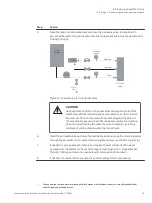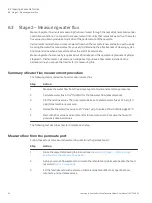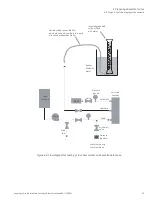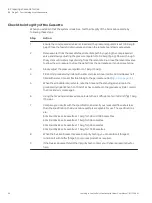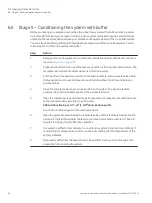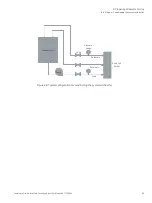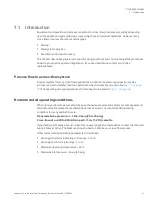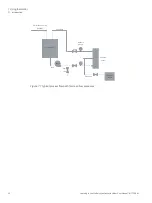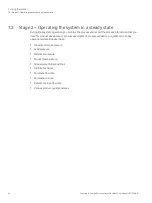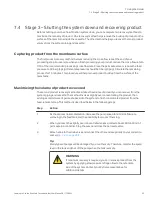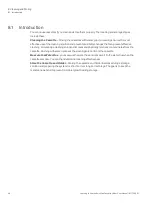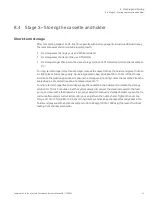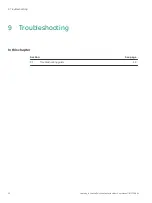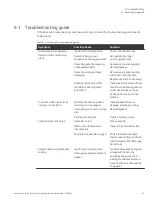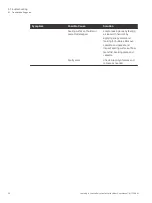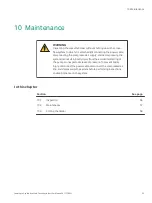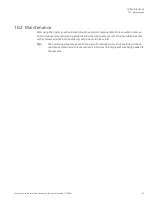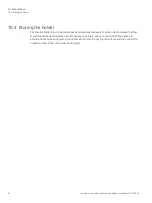
7.2 Stage 1 – Starting the cross-flow process
Follow these steps to start a typical cross-flow process:
Step
Action
1
Drain residual water from the system and equilibrate the system with water or buffer.
2
Close the permeate valve; open the feed and retentate valves; and close the drain valve
(if equipped).
3
Direct the permeate line to an appropriate container or drain; for example, a permeate
container, waste container, or process drain.
4
Fill the feed tank with product. Start the feed pump and slowly circulate the product
through the system for about three to four minutes. Recirculation helps purge trapped
air from the flow channels, maximizing membrane performance.
5
Open the permeate valve. Slowly increase the pump speed until the optimal cross-flow
rate is achieved. Using the retentate valve, adjust the retentate backpressure until the
system reaches the optimum transmembrane pressure.
Tip:
If you do not know the relationship between your pump speed setting and the feed flow
rate, it may be difficult to consistently achieve the process conditions you desire.
Therefore, to ensure consistent performance and ease of use, prepare a pump curve on
your feed pump before processing so that you know the relationship between pump
speed and flow rate.
6
Monitor the product level in the feed tank to ensure the pump does not run dry. As the
level drops, you can add additional product to the feed tank.
7
If needed, transfer diafiltration solution into the feed tank at a controlled rate to maintain
a working volume in the feed tank. (The required number of diafiltration volume
exchanges varies greatly with respect to the particular characteristics of a product.)
Typically, in biopharmaceutical processes, six volume exchanges of buffer are commonly
processed through the feed tank.
8
Continue processing following the steps in
Section 7.3 Stage 2 – Operating the system in
.
7 Using the Holder
7.2 Stage 1 – Starting the cross-flow process
Learning to Use the Kvick Lab Cassette Holder User Manual 18117269 AI
43

